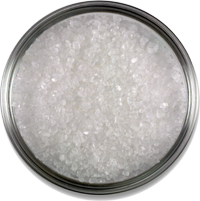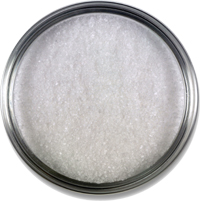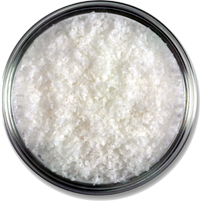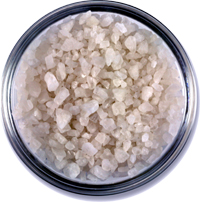Resources - Production
vacuum evaporation
A typical vacuum plant consists of a series of closed cylindrical vessels, or 'effects', containing steam chambers, which in turn contain a number of tubes. There are several steps in the process:
- Brine is circulated through these tubes with steam condensing on the outer surface
- The first effect receives low-pressure steam into its steam chamber
- The brine boils at a temperature dictated by the inlet steam pressure
- As the brine boils in the first effect, water evaporates
- This produces further steam and causes salt crystals to grow
- As the brine boils and the water is "driven off", a thick salt slurry of brine and salt crystals is formed
- This is fed to the second effect and circulated through a second heater unit which utilises the exhaust steam from the first effect
- Pressures (and boiling temperatures) become successively lower through the evaporators. The final ones operate under vacuum and enable the brine to boil at much lower temperatures, which is more fuel-efficient
- The slurry from the final effect is fed into a centrifuge to extract more moisture
- The resulting undried vacuum salt is then stored in bulk, for supply to the chemical industry.
For food and allied industries, a drier salt is required. Salt from the centrifuges is fed into fluid bed drier-coolers - rather like hair-driers - for further drying. The salt is then sieved and graded before being transferred into large storage hoppers ready for distribution.
cut and blast mining
A slot is cut at the base of the rock face using a machine called an undercutter, with a jib carrying a series of tungsten-carbide picks. The face is then drilled with a series of carefully sited holes, using an electro-hydraulic rotary drill. The holes are charged with explosives and the face is blasted, yielding about 1,400 tonnes of broken rock salt.
The rock is crushed into pieces about the size of a football, using a feeder-breaker. It is then carried on a conveyor belt to the main crusher which breaks it down into smaller pieces, passing through a type of sieve or screen to ensure that it has reached the correct size for use in road de-icing. The salt is then hoisted to the surface in skips.
continuous mining
This type of mining produces smaller lumps of rock than the cut and blast technique. A boring machine, similar to a pneumatic drill used in digging up roads, is used. It has a rotating head carrying tungsten-carbide tips, which bores into the salt. The lumps are then taken directly to a crushing and screening plant, without the need to be crushed by a feeder-breaker first.
Under either technique, care must be taken to ensure that the mine is stable by leaving substantial 'pillars of salt' to support the mine roof. This mine layout is called 'Room and Pillar' mining, and mine engineers use the principles of rock mechanics to calculate the optimum size of the pillars, for safety and stability.
Before storage, the salt is treated with an anti-caking agent to stop the pieces coagulating. This ensures that it can be held in local storage depots, ready for use on the roads as soon as frost is forecast.



